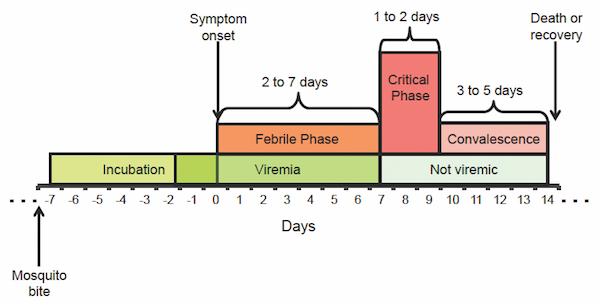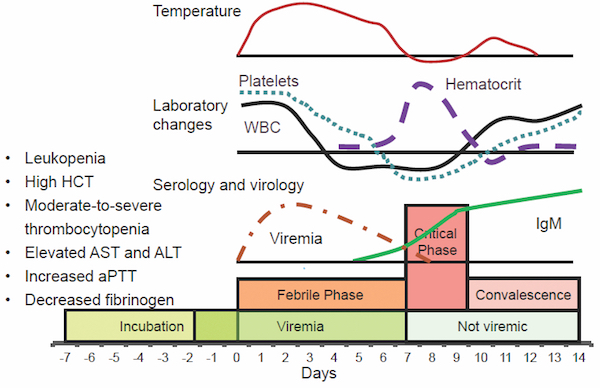Dengue fever is one of the major health problems in tropical and subtropical areas throughout the world. Pakistan has confirmed Dengue cases nationally. Some recent cases have been reported from the following regions: Balochistan, Dhaka, Islamabad Capital Territory, Sindh, Khyber Pakhtunkhwa, and Punjab.
INTRODUCTION
Dengue fever is an acute infectious viral disease, also known as breakbone fever.It is a arthropod-borne (arboviral) illness in human. It is caused by infection with 1 of the 4 serotypes of dengue virus (DENV1,2,3,4), which is a Flavivirus (a genus of single-stranded nonsegmented RNA viruses). Once affected persons acquire long-life serotype specific immunity. Dengue is transmitted by mosquitoes of the genus Aedes and species aegypti and albopticus.
Vector Biology

Morphology

Biting Habits
• “Daybiters” with two peaks of biting time, 1 to 2 hours after sunrise and 1 to 2 hours before sunset
• Only female mosquitoes bite because of the requirement of blood for oviposition
• Males do not bite but feed on plant juices and nectar of flowers
• Man is the preferred host but in his absence, lower vertebrates serve as substitute
Flying Habits
• Do not fly great distances
• Farthest flight distance is within 200 to 400 meters radius from their breeding places
• Adults found around 50 meters from the breeding sources
CLINICAL COURSE OF DENGUE
The illness begins abruptly and can be divided into 3 phases: febrile, critical and convalescent phase

1. Febrile Phase
- Corresponds to fever which lasts 2 – 7 days
- Days 2 to 6 post onset: Macular or maculopapular truncal rash that spreads to face and extremities
- Defervescence occurs on day 3 – 8 of illness
- Defined as when body temperature drops to less than 38.0°C & remains below this level
- Classic signs and symptoms: headache, retro-orbital eye pain, arthralgia, myalgia, or hemorrhagic manifestation
2. Critical Phase
- Occurs around time of defervescence, and lasts for 24 to 48 hours
- Most patients improve during this phase while a small proportion develop a clinically significant plasma leakage due to an increase in vascular permeability
- Signs of plasma leakage
- Increasing HCT
- Hypoproteinemia
- Pleural effusions
- Ascites
- Around time of defervescence: Petechiae may appear, especially on lower extremities. These warning signs may develop
- Severe abdominal pain
- Persistent vomiting
- Ascites, pleural effusion
- Mucosal bleed
- Lethargy; restlessness
- Liver enlargement >2cm
- Drop in PLT with increase in HCT
- Intravascular volume depletion secondary to increased vascular permeability
- Severe hemorrhage may occur especially if they have prolonged shock
- Severe organ impairment including hepatitis, myocarditis, pancreatitis, neurodengue.
3. Convalescent Phase
Gradual re-absorption of extravascular fluid takes place in 48–72 hours, and diuresis ensues. General well being improves, hemodynamic status stabilises, and patient may become bradycardic.
LABORATORY FINDINGS
1. Febrile Phase

2. Critical phase

COMPLICATIONS DURING CLINICAL COURSE

MANAGEMENT
1. Out Patient
Restricted Physical Activity
Diet & fluid
Antipyretics : Paracetamol
Do NOT give NSAIDs NOT even suppositories
Advice on review & admission
2. Criteria for Admission Essential
Warning signs
Abdominal pain or tenderness
Persistent vomiting
Lethargy & restlessness
Hepatomegaly
Mucosal bleeding
Evidence of plasma leakage
Platelet count 100,000 cells/c.mm
Pregnancy
Elderly patients & infants
Obese
Co morbidity
Diabetes
IHD
Chronic renal failure
3. Treatment
Paracetamol is recommended to keep the temperature below 39oC.
Copious amounts of fluids should be given orally, to the extent the patient tolerates, oral rehydration solution (ORS), fruit juices are preferable to plain water.
IV fluids should be administered if the patient is vomiting persistently or refusing to feed.
Close monitoring should be done to look for signs of shock.
The critical period is during the transition from the febrile to the afebrile stage and usually occurs after the third day of illness.
Serial hematocrit determinations are essential guide for treatment, since they reflect the degree of plasma leakage and need for IV administration of fluids.
Hematocrit should be done daily from the third day until the temperature has remained normal for 1-2 days
PREVENTION
This is what you can do to help…
Prevent Aedes from Breeding by removing all sources of stagnant water
Change water in vases on alternate days.
Remove water from flowerpot plates on
Turn over all pails and water storage containers.
Do not litter. Rubbish such as cups and bottles can collect rain water and breed mosquitoes.
Before you leave for holidays…
Cover all toilet bowls in your home.
Seal off the overflow pipe of the flushing cistern.
Cover all gully/floor traps.
Add sand granular insecticide to places that mosquitoes could potentially breed, such as flower vases and places where stagnant water could not be removed.
Let your family, friends and neighbour’s know about the dangers.





